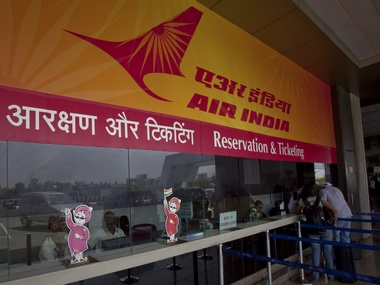It’s been a week since Air India’s pilots went on a strike. Not only has the strike disrupted the travel plans of thousands of passengers but it has also also cost the debt-laden airlines around Rs 96 crore so far.
While government coffers have been opened up for the airline, the use of the fresh equity was based on performance, signs of which are nowhere in sight.
In fact civil aviation minister Ajit Singh’s quip in the midst of the ongoing strike that “Air India is sick and I hope it doesn’t reach ICU” is a candid admission of the crisis plaguing the national airline.
But what is it that led to this crisis? Was it merely unprofitable routes and multi-billion dollar aircraft orders or is the problem much deeper?
[caption id=“attachment_308262” align=“alignleft” width=“380” caption=“The split between the two systems is evident as not only pilots and the cabin crew, but also the junior staff and managers compete for allowances, wage hike and holidays. Reuters”]  [/caption]
That Air India is not good with its management practices, or that political leadership has never allowed the airline to function on a commercially sound basis is well known. Allowing a babu to run the airline without giving him a free hand, and consistently changing the chairman, hasn’t helped either.
As columnist AJ Philip pointed out, “Politicians in power and bureaucrats have always treated Air-India as a milch cow.” Air India is not run on commercial or professional lines, but on political considerations, offering freebies to the all and sundry in the government.
“Again, it is political considerations that force Air-India to run services on uneconomic routes. That is why, as Aviation Minister Ajit Singh says, the government will have to inject $5.9 billion by 2020 to keep Air-India flying. It is this kid-glove treatment that encourages cash-strapped private airlines like Kingfisher to think in terms of seeking a bailout from the government,” argues Philip.
Impact Shorts
More ShortsAnother key reason for the ongoing crisis is the failed merger of Air India and Indian Airlines. The split between the two systems is evident as not only pilots and the cabin crew, but also the junior staff and managers compete for allowances, wage hike and holidays.
“The merger created problems that cannot be solved. Our grades, work, promotions and allowances are different. When you see your colleague from the other cadre doing the same work, but getting easy promotions, allowances, there is bound to be resentment,” a senior official with the operations arm told an IANS correspondent on condition of anonymity.
Another factor that has affected the morale of the employees is the executive pay scale in Air India which is surprisingly lower than those of Indian Airlines.
“Some of us were overlooked and the discriminatory power was used to promote the other cadre. This left many saddened. After such harassment who would like to put in his best effort,” another official told IANS.
Ajit Singh last week rightly blamed the merger between the two entities for the ongoing crisis, saying that more due diligence should have done before carrying out the process.
“Not taking the pains to see through the merger, which requires a lot of delicate work, especially where many unions are involved, appears to be the main reason for the failure of the exercise,” wrote Mail Today’s Sanat Kaul in an Oped today.
Air India carries about 8,000 passengers every day, earning about Rs 15 crore a day from international operations. The agitation, however, saw daily earnings from international passengers dip to about Rs 9 crore. And to make things worse, even lenders are now concerned on whether the bailout package should be released given the magnitude of the agitation, since the money is linked to the airline achieving certain milestones.
So what’s the solution? Time and again experts have pointed out that the airline should be be given to private management to recoup its losses and then hand it back to the government once the airline is revived. But to begin with rebuilding its customer base, and improving management-employee relations might be a good place to start.


)

)
)
)
)
)
)
)
)



